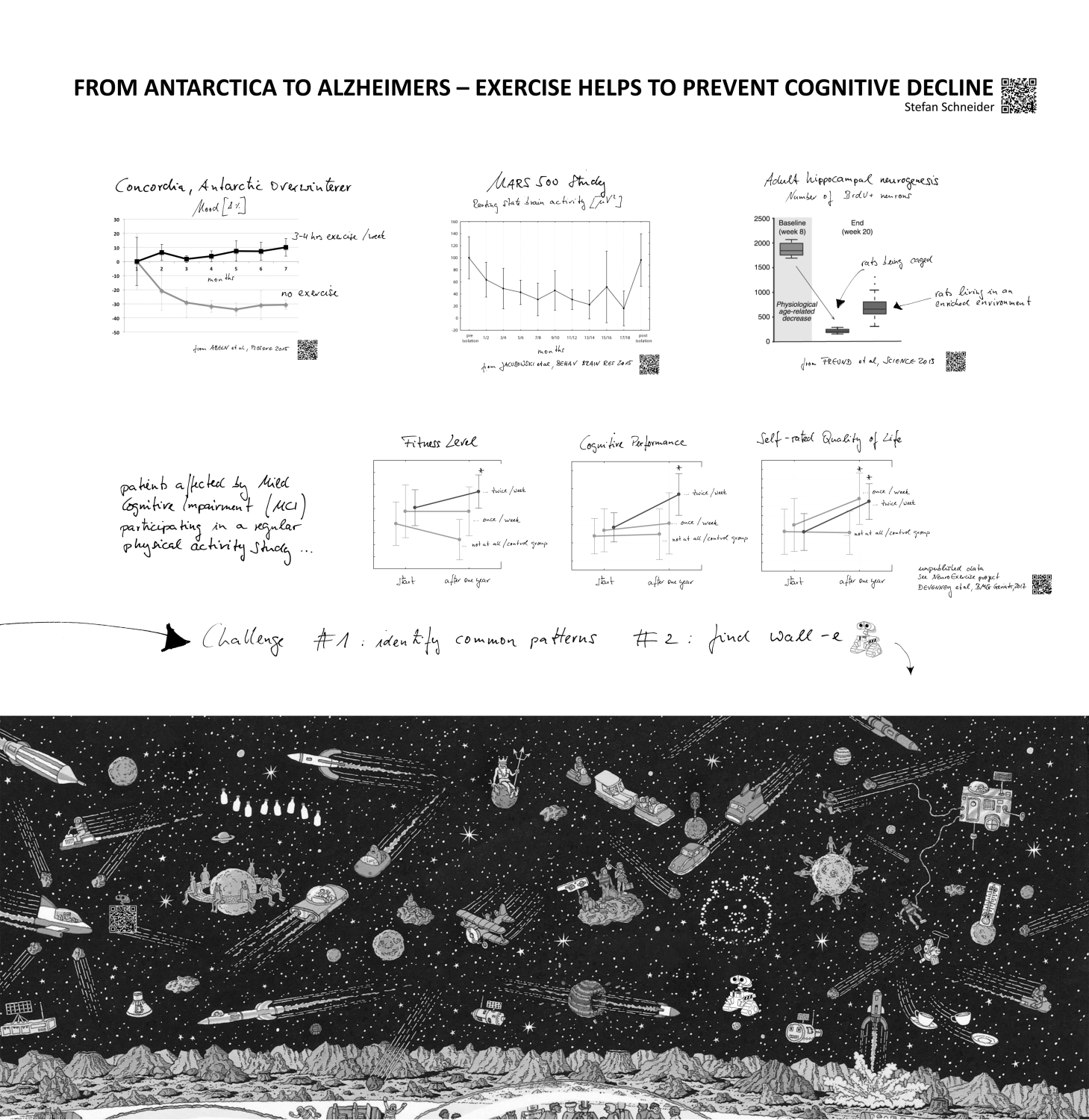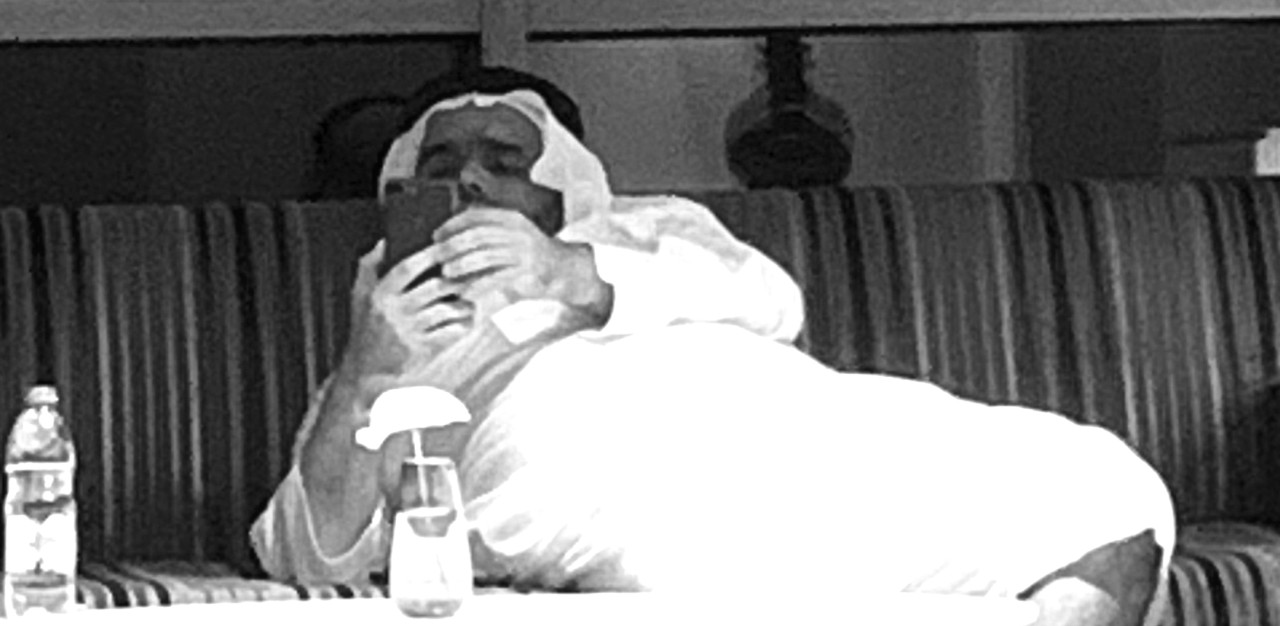From Nov 27th to 30th I attended the XXIV World Congress of Neurology in Dubai. During the oral and poster presentations, I was getting annoyed about the inability of the presenters to attract my attention. Although there is reason to speculate that this might be my personal problem (not able to focus?), when looking around in the audience, I had the impression that many more attendees were facing a similar problem (signs of our modern time: not able to focus?).
As scientists we are obliged to communicate our scientific data and results and to put these in a specific (or even better: broader) scientific context. Especially in the era of fake news, a sound and reliable scientific communication is essential. When we communicate, not only as scientist, but in general, it is of utterly importance to identify the audience we are targeting.
In this brief comment I would like to share my ideas and concepts concerning the two main communication pathways of scientists: papers and conferences.
.
PAPERS
The hardcore communication od scientific studies and results is done in the specific journals of our disciplines. Here we present the general idea of a study, report the methods and the results and discuss these with special attention to our initial hypothesis but also aim to put these results in a bigger context. Manuscripts are most often reviewed by peers (except if we are targeting predator journals, where a monetary compensation replaces the scientific review), which guarantees a high quality and reliability of studies. Entering a peer-review process, especially for those doing this the very first time (Master or PhD students) is quite challenging and a lot of worries and precautions are associated with this: Which journal? Which reviewers should I propose? What angle of attack should I use? My advise to my students: Don’t worry, submit! A manuscript that is submitted does not need to be 100% perfect. 80% is enough. The rest is done by the reviewers.
I have submitted > 150 manuscripts in the past 20 years (find below my top 3 stories) and I have realized, that reviewers always have their individual look on a paper and try to shape it with respect to their specific expertise. There is no need to consider possible comments of reviewers on a paper beforehand, as we never know who will get the paper and the actual mood s/he is in, when reviewing this paper. We should aim to tell the story that we think is worthwhile telling and if a reviewer likes the story (and the display of methods & results is sound and reliable) s/he will approve it, perhaps shape it a bit with her/his expertise. Responding to his/her comments how to improve the manuscript makes up the final 20%. Side note: Never discuss with reviewers, humbly accept their suggestions!
My advice: Do not worry too much about what reviewers might say: Use that time to pray that your paper reaches a fair reviewer and that s/he is in a good mood. That seems to be a better use of time.
Here are my top three stories of submitting manuscripts.
1) We have submitted one manuscript 13 times to different journals without changing the content, the wording and without taking into account on the reviewers comments. The initial, first journal we submitted to had an impact factor of 2.3, we went down during the 13 submissions to an IF of 0.7 before ending up in a journal with an IF of 3.2. We learned: Not the journal or the content of your manuscript is important, but to find the right reviewers that match your content. Be patient: There is always someone out there who likes your work!
2) One of my PhD students submitted a manuscript to a renowned journal (IF>3) where he reported results of an exercise intervention on cognitive performance in mentally disabled children. Five days after initial submission, he got a letter from the editor stating that his paper was accepted for publication, without any review. First, we thought that this might be a mistake but by further investigation we found out, that one of the editors was father to a mentally disabled kid and thought it was important to deal with this matter. That’s how inclusion works!
3) I was co-author on a paper submitted by the PhD student of a colleague. Again, a good ranking journal with an IF > 3. Two days after submission, I was invited to review exactly this paper. It seems as if the journal just went through its data base to identify possible reviewers without considering possible conflicts of interest. The editorial office did not even look at co-authors. What would you have done? Good scientific praxis obviously would have informed the editorial office. But I was frustrated about the superficial handling of the manuscript. So I accepted the review invitation and jubilated the manuscript as if this would have earned the Nobel Price. I thought at least now the editorial office would realize a conflict of interest. They did not, but fortunately two other reviewers rejected the manuscript
.
CONFERENCES
Scientific conferences are a different world. Personally, I enjoy small conferences, where scientist with a similar background meet. They all have a detailed knowledge about the topic you are talking about, they have read your papers and you have read theirs. But most conferences are conferences where people with different scientific backgrounds meet. Even if a conference is dedicated to exercise science or dementia, today scientific disciplines are extremely specialised and only a handful of attendees have the specific knowledge of my field. Here my task is to inspire the attendees with my science. And believe me: This does not work like a paper. You have probably been on conferences, where talks or poster presentations follow the classical composition of a paper: Introduction, methods, results, (very specific) discussion. It gets even worse, when people are presenting that are brilliant scientists but have no idea on how to use a microphone or how to talk in front of an audience (actually I think there is a high correlation between being a scientist and the inability to give a meaningful presentation).
–> WHO ARE YOU SPEAKING TO? You need to identify your audience
On larger conferences these are not people from your field. If you give a lecture, there might be a handful of people who are really interested in your research because they come from the same very specific field. Most attendees in a lecture are just sitting there, because the social program has not yet started, they are bored visiting the exhibition area or are interested (content wise or because a friend/colleague is presenting) in one of the other talks of your session. Well, your task here is to entertain these people. To present your research in a way that is sexy, attractive and funny. Nail your message down to one sentence (–> take home message) and design an interesting story around this. People will be really thankful for understanding your problem, your approach and perhaps see a relevance for their own work. Be broad, not specific. They are thankful for a funny story or a weird approach. Because there are so many boring stories…. If a story exists at all.
You might want to have a look at one of my talks, unfortunately only in German, titled: “Would Jesus have become dement”?
The story, in brief is, that (1) because Jesus was a itinerant preacher, and (2) a physical active lifestyle has been proven to prevent age related cognitive decline, he most probably would not have become dement. Although there is a high probability that Jesus would have retired at some stage (if he would not have been nailed to the cross) and that he might have experienced memory problems when getting older. The story was to introduce the RCT NeuroExercise study, investigating the effects of a one-year exercise intervention with sedentary older people being at the onset of Alzheimer’s disease (MCI). The title alone in a conference program is attritive and once I tell the Jesus story, I definitely have the attention of the audience. Especially with the slide tracking down Jesus path during the first eight month of his messian period on google maps.
.
POSTER PRESENTATIONS
The challenge to attract people is even bigger here, because they often have really nothing to do, but just try to fill the break in between two boring sessions they are attending because there is nothing else to do (see above). But to be honest, I have seen so many passionless and overloaded posters that I can understand people walking by and not paying attention.
For the World Conference on Neuroscience (WCN) in Dubai and I have designed a very unique poster (you’ll find this below). Obviously, this is hard to understand, but people are really irritated by the format and start to have a closer look. To be honest: Most people are initially not interested in the science behind the poster, but by the layout. But when I start guiding them thought the story, they understand the connection between isolation during space flight and analogue environments and the risk of getting Alzheimer’s. Yes, scientifically this is to simple: But people start to think about it and we had many fruitful discussions. Unfortunately, no one got the Wall-e / Wally reference…..


No responses yet